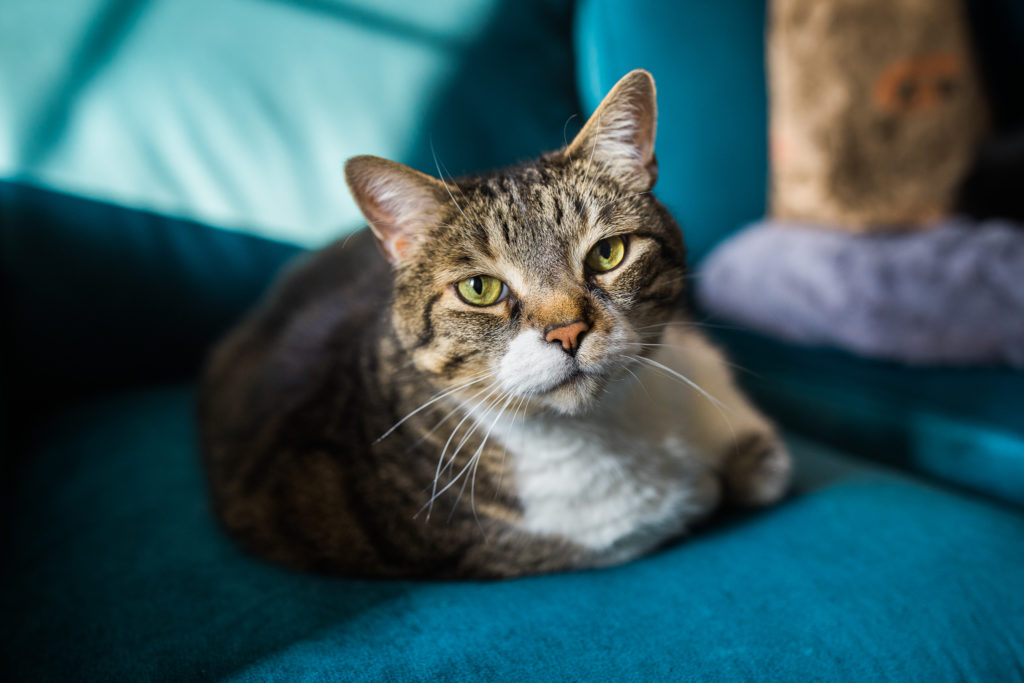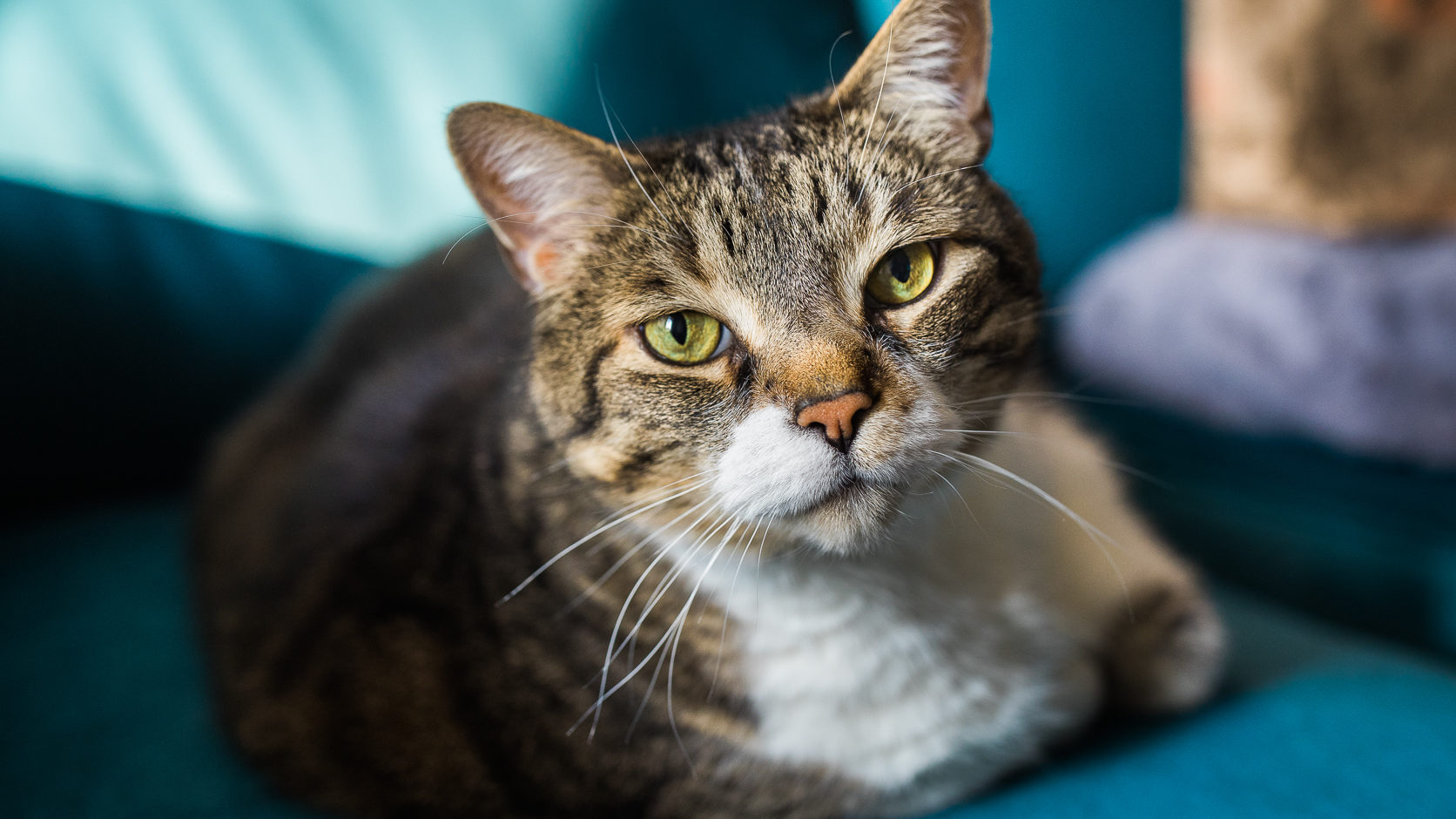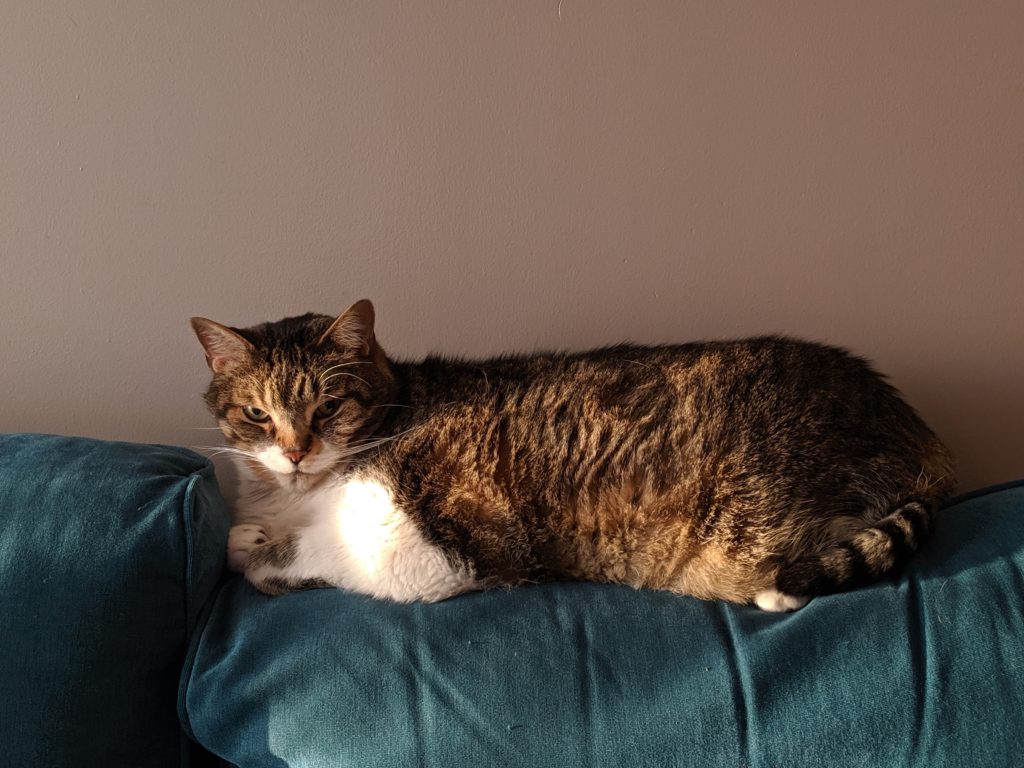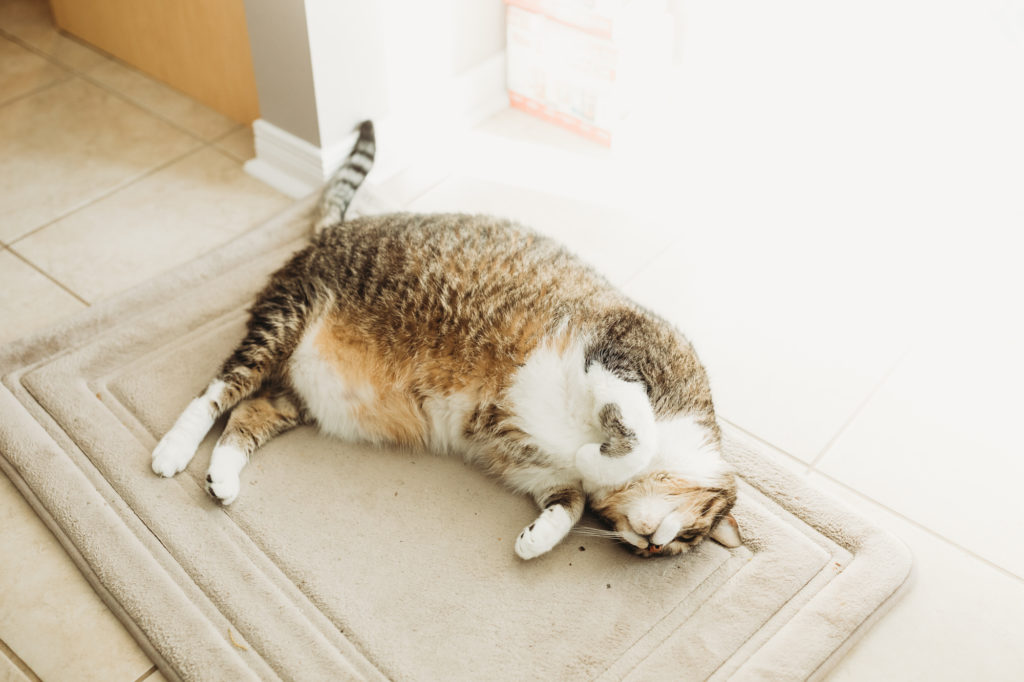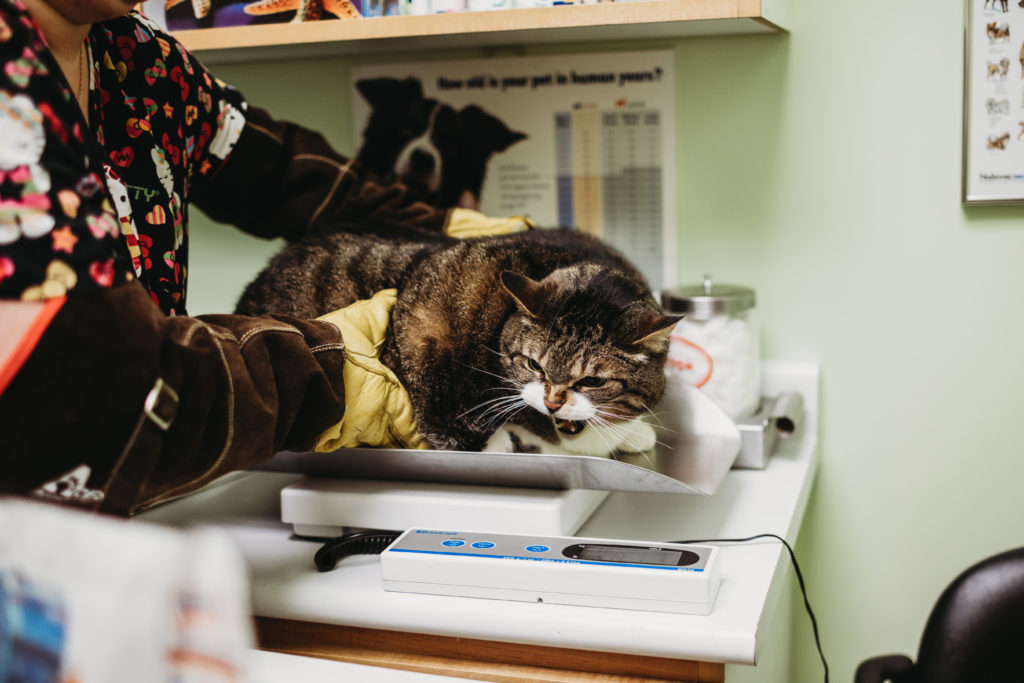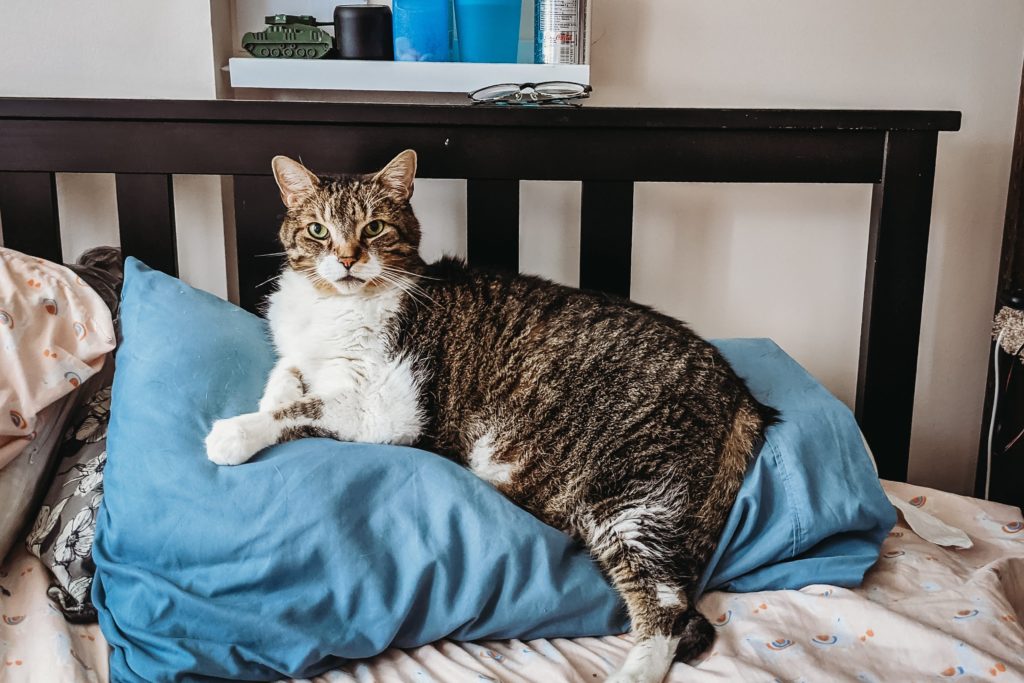Hi, I’m
FatCatHercules
Relentlessly bold educator on feline obesity and feline pancreatitis
+ unapologetically fat chonky cat
Who is FatCatHercules?
This is Hercules; he’s an unapologetically fat chonky cat.
Hercules struggled with obesity his whole life in addition to both acute and chronic pancreatitis. After several battles with pancreatitis (and many with the scale!) Herc told us it was time for him to go to the bridge.
Herc’s larger-than-life persona and influence has continued to inspire others on their feline weight loss journey.
He leaves behind a community of nearly 300,000 “furriends” on his social platforms which we used to chronicle his weight loss journey and pancreatitis struggles. This website is an extension of our social media platforms and will be used to:
Whether you’re here for the stories or the knowledge, we’re happy that you’re here.
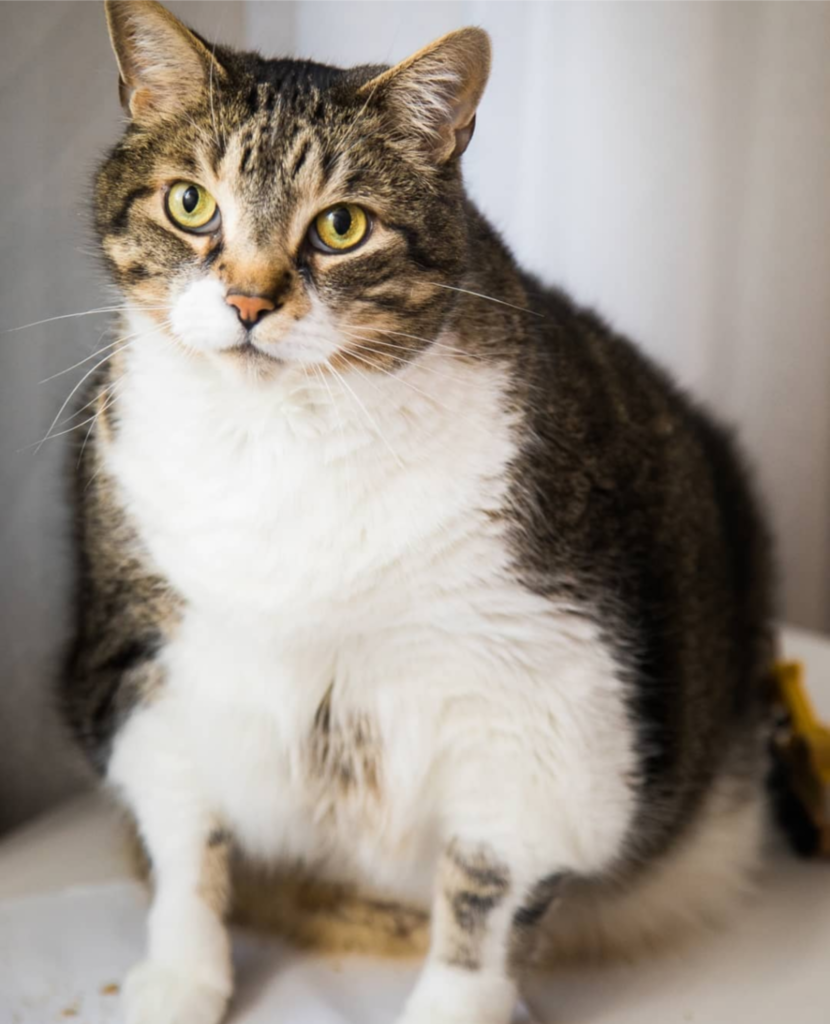
Lets Be Furriends
Stay up to date with never-before-heard Herc stories, new education announcements, and exclusive promos.
(Don’t worry, we believe spam is for eating – not for inboxes! We don’t email too frequently!)
Our Mission
Hercules was larger than life, and even in his passing, we are dedicated to continuing to share our experiences with
feline obesity, feline pancreatitis, and body “pawsitivity” through humor and just the right amount of “cattitude”.
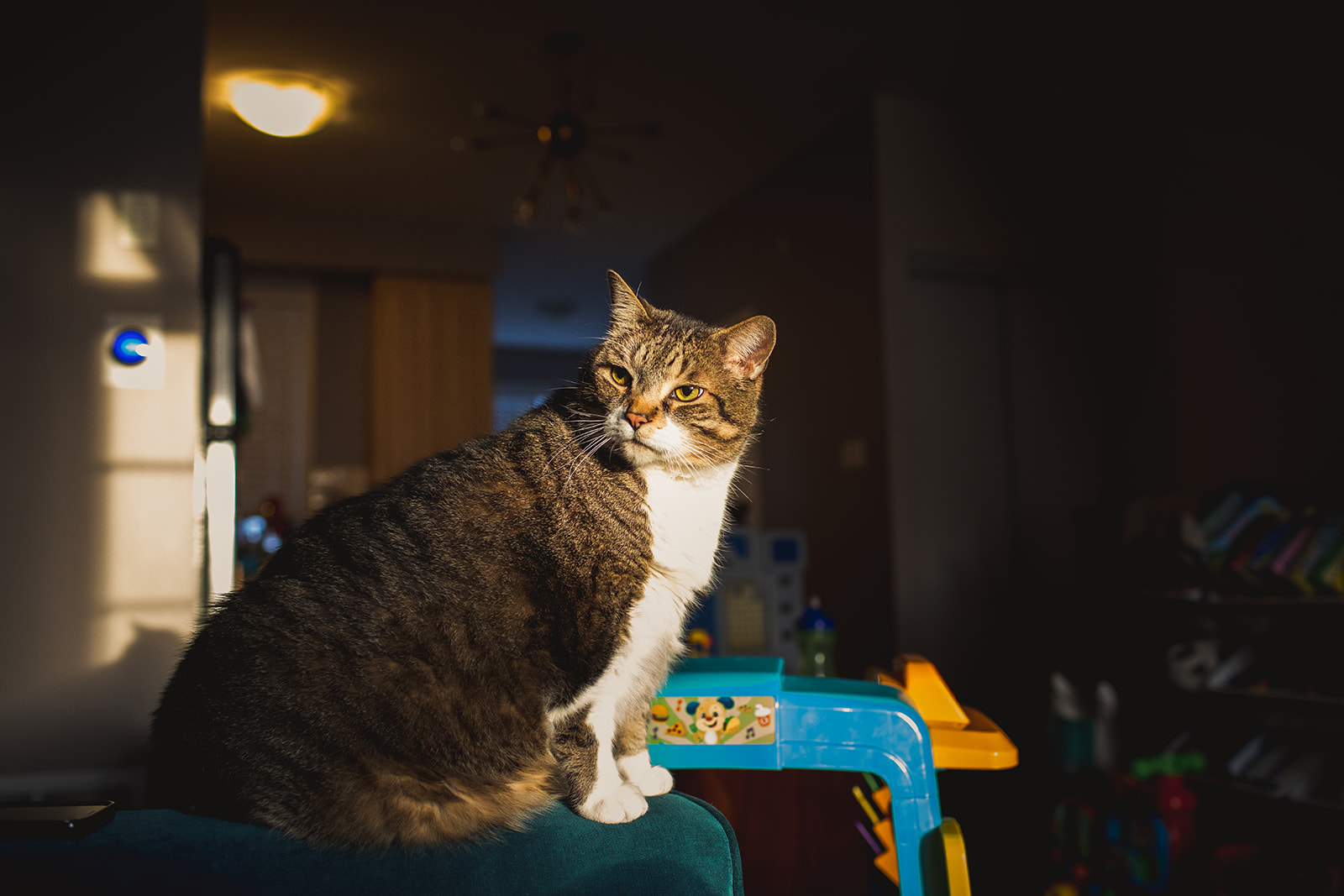
Herc’s Weightloss
Journey
Starting at 30 pounds, Hercules lost nearly 25% of his body weight – twice! – but it wasn’t easy.
Follow his journey, learn from our mistakes, and see how we tackled the obstacles in our way.
Are We Vets?
No – we are not veterinarians or vet techs.
Herc hated every vet he ever met.
The sheer fact that we’re alive to tell these stories shows you that we are absolutely not veterinary professionals.
The information that we share on this page is meant to act as a resource for you, not for medical advice or treatment plans.
We’re sharing our personal stories and any other information will always have resources attached so you can bring that to your vet for further discussion.
How do Cats Get so Fat?

Obesity is a complex disease and up to 40% of. While obesity can occur as a result of consuming too many calories, it’s not always that simple. If it were as simple as ‘calories in, calories out’ we wouldn’t be seeing obesity problems in humans or in animals.
While calories absolutely do play a role, there are many other risk factors that can affect how a body sees a calorie. We all have that friend that can “eat anything” (pizza, burgers, junk food) and stay slim and we all have that friend who “eats healthy” (grilled chicken, salad, low or no carbs) and struggles with their weight. Human bodies are all different because there are many contributing factors or risk factors associated with obesity.
So how does a cat get chonky? Here are some contributing factors and risk factors associated with feline obesity:
Neuturing + Spaying
Many studies have shown that a cat’s metabolism changes – sometimes dramatically – after a spay or neuter.
When a cat is spayed or neutered, they experience a considerable hormonal shift as a result of the removal of the organs. These organs produce hormones like estradiol, progesterone and testosterone. They, along with other hormones, play a role in how a body regulates hunger signals and eating habits which can put your cat at risk of weight gain.
While the same amount of food may have been perfect before, it could result in weight gain post-sterilization. It’s important to discuss nutrition with your vet or vet tech after your cat is spayed or neutered. Hercules’ weight struggles began almost immediately after his neuter.


Medical Conditions
Whether it’s due to pregnancy, fluid retention, acromegaly and other endocrine disorders, hypothyroidism, or from medications they’re on, weight gain can be a result of medical conditions or from side effects of treating other medical conditions.
Breed
Some cat breeds, especially mixed breeds like Domestic Shorthair cats, can have an increased risk of weight gain. Some cats also have larger frames based on breeds. This means 18 pounds may be a perfectly normal weight for one cat, but obese for another. Never judge by the number alone.
Gender + Age
Age plays a factor in a cat’s risk of obesity. As a cat gets older not only does their metabolism change but so does their physical activity. A cat who has been average sized all their life may start to gain weight in middle age without a change in diet. Male cats are at an additional risk of packing on the pounds, especially post-neuter.
Owner’s Education + Understanding of Feline Nutrition
Yes – overfeeding is also a reason for the growing emergency of chonky cats that seem to be taking over not only the internet but also vetrinary offices. However, there are many reasons why overfeeding can happen and most are related to education on feline nutrition and not because someone is being willfully neglectful.
If you truly care about the health of the cat, you’ll be considerate to the mental health, emotions and respect of the owner during conversations about feline obesity. You cannot help the cat without getting the owner onboard.
An owner’s involvement in the life of a chonky cat is a topic that must be approached with compassion, understanding and exist in a space where strong communication skills are present. Any type of finger pointing or owner shaming only serves to derail conversations and put the cat further at risk.

More about Feline Obesity
>> View More on Feline Obesity
We’re here to help you with
What is a
Chonky Cat?
Was Hercules the biggest chonky boi on the internet?
Are you wondering what a chonky cat is? That’s okay – we’ll help you adjust to the beautiful world of internet slang culture and how there’s a niche of cat-specific language that exists on the internet. A chonky cat is internet slang for a fat or overweight cat and can be found used as far back as the late 2000’s. It became used for specied other than cats and now generally refers to any “chunk” or “chubby” thing.
Hercules was not the fattest cat in the world, but he certainly is a contender for one of the chonkiest cats on the internet. Other famous fat cats like Katy the 50-pound Siamese cat and Tulle the Tubcat tipped the scales quite heavier than Hercules. Zarathustra of FatCatArt was also a well known chonky boy but they were all typically known for things other than a weightloss journey.
Obese animals (and people for that matter) do not need to be defined by their obesity nor do they owe anyone proof of their weightloss journey. With that said, there are many chonky cats who choose to share their journey online in an effort to improve education and awareness of feline obesity and interventions. This is where Hercules was a superstar!
If you’ve followed the instagram #ChonkyCat community, you’ll come across many accounts that are highlighting their cats weightloss journey including: FatCatHercules, Jackapotamus Rex, Big Barsik, Bruno Barlett, Keith the Cat Cow, Snacks the FatCat, Little Guy, Waffles, King Duncan, Cinderblock and Bronson.
Being a chonky cat isn’t a competition nor is a feline weightloss journey. Hercules certainly was a chonky boi whose weightloss journey was slower than many others, but he did amazing and we encourage all our other chonky friends and owners of chonky cats to keep up the great work, even when it’s hard.
More about Hercules
>> View More about FatCatHercules
Did Someone Say Treat?
Even Herc knew it was okay to have a treats – in moderation. Has it been a while since you’ve treated yourself?
Get yourself something special – you deserve it.
Hercules struggled with pancreatitis most of his life, but…
Will all Chonky Cats get Pancreatitis?
Pancreatitis in humans, as well as in dogs, can occur as a result of a high-fat diet. In cats, however, there is no consistently reported studies that indicate that high-fat diets or the weight of an animal (regardless of diet) play a role in the disease. Unfortunately, when we’ve spoken about Hercules’ pancreatitis online, it’s always been inevitable that trolls will come in and make assumptions that his weight was related to his pancreatitis.
So what causes pancreatitis in cats? The etiology (ie: cause) of feline pancreatitis is actually largely unknown!

Autoimmune
Autoimmune pancreatitis can be seen in humans although studies are extremely limited in cats. In human autoimmune pancreatitis, the body attacks it’s own pancreas and the use of steroids can stop this attack. Doctors can measure the success of this intervention by looking for certain levels in the blood (IGg4) and can see them lower, which means the intervention is successful. While these blood levels (IgG4) are not measured in cats, some studies show that cats with chronic pancreatitis respond to short course steroids which can be indicative that there may be an autoimmune component to feline pancreatitis but that we have yet to discover the feline equivalent to the IGg4 levels in cats.
Physical Injury and Hypotension
Some veterinarians believe that physical injury to the pancreas, like that sustained from major abdominal trauma or falls from considerable heights (highrise syndrome), can be a cause of pancreatitis in a cat. Others have hypothesized that manipulation of the pancreas during surgeries can increase risk; however, hypotension during anesthesia can be linked to feline pancreatitis with more confidence than with organic manipulation.
Congenital Malformations
New studies and case reports are emerging that are indicating that congenital malformations of certain pancreatic ducts (either ducts that are dilated or blocked) may contribute to the risk of developing pancreatitis. In addition to this, a cat’s natural physiology is that they typically only have 1 pancreatic duct in lieu of 2 which means they don’t have a “backup” duct in the event of a problem.
Infectious Diseases and Bacteria
Some veterinarians speculate that certain infectious diseases like feline parvovirus, Toxoplasma gondii, feline calicivirus, feline herpesvirus, and feline coronavirus can be contributing factors to the onset of feline pancreatitis.
In some cases, up to 35% of cats studied for acute pancreatitis have exhibited signs of bacteria present in the pancreas. It’s hypothesized that this bacteria may play a role in pancreatitis but this is not seen in all cats.
Toxic Substances
In rare cases, ingestion of organophosphates can result in pancreatitis although this is not documented with significant occurrences.


Secondary to other diseases
Pancreatitis can also arise as a secondary condition when other diseases of abdominal organs are present. Some cats with gallbladder, liver, or bowel diseases or conditions can be at an increased risk of developing pancreatitis. While secondary pancreatitis can be managed the same way that any other occurrence of pancreatitis can, the underlying cause must also be addressed to achieve management.
Idiopathic
In many cases, up to 90-95% of cases, the cause of feline pancreatitis is unknown and thus deemed idiopathic. Having had a cat who battled with pancreatitis for over half their life, though, I can understand why this number is so high. Finding out why something is happening means you need to be able to access any and all diagnostic test available. Considering that some are not available for cats (like monitoring the IGg4 levels) while others come at considerable costs (like ultrasound and MRI for looking for congenital malformations within the pancreas) it’s understandable that many owners focus on treating their pet acutely and not on finding out the ‘why’.
More about feline pancreatitis
>> More on Feline Pancreatitis
A Must-Have for Ever Vet Clinic
Does yours have this?
Every vet office should have a weight loss program run either by a vet or an RVT where every patient is consulted into the program either with a new patient booking, upon yearly checkup, or after their spay/neuter in order to prevent obesity or address obesity as quickly as possible.
Spotlight on RVTs
Our spotlight is on Rebecca – yes, the famous Rebecca! Hercule’s arch-nemesis, weight loss coach, and incredibly dedicated RVT.
Rebecca, along with Herc’s vet Cheryl, was integral in starting and maintaining the weight loss clinic at Hercule’s first veterinary clinic. The program started in mid-2015 and is still running.
Not all vet offices have weight loss programs; we’ll learn more about feline obesity and feline weight loss from Rebecca in our Spotlight article.
Helping your Cat Lose Weight:
How to turn your chonky cat into a slonky cat
Putting a cat on a diet isn’t something you should do without guidance from your vet, but once you have that crucial conversation with your vet, how do you implement a diet successfully? You need the right tools!
Getting a chonky cat to lose weight means you need to address 2 things: food + exercise. Food is going to be key to success and there are many tools out there that can help you along your way. These are some of our favourite tools that were instrumental in Hercules’s weightloss success.
Is it Okay to Love Chonky Cats?
The internet seems to love chonky cats, but is it okay to love and celebrate cats who may be facing increased risk of complications in the future?
Is it ethical to love chonky cats?
Are Chonky Cats Healthy?
Up to 63% of cats are overweight or considered ‘chonky cats’ but this doesn’t mean that they are inherently unhealthy.
Don’t believe me?
Trending Chonky Cat Articles
>> View More on Chonky Cats
Chonky Cat Adoption
Should you adopt a Chonky Cat?
The internet thinks that chonky cats are just the cat’s meow, but should you adopt a chonky cat?
Any time you’re thinking about adopting a cat, whether chonky or not, you need to ask yourself why you want to adopt that cat. Is it because you feel a connection with their personality and you know they’ll bring happiness?
… or is it because you see them as an opportunity? As something to get views with online because they’re cute and trendy?
This is what having a chonky cat is really like…
More on Feline Obesity
>> See More on Feline Obesity
More on Feline Pancreatitis
>> View More on Feline Pancreatitis
More on FatCatHercules
>> More on FatCatHercules
Spotlight Articles
Our Faves from the Shop
-
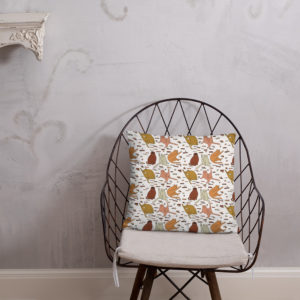
 Judgements cat Basic Pillow$33.12 – $38.12
Judgements cat Basic Pillow$33.12 – $38.12 -
 Galaxy Pizza Fat Cat$42.49
Galaxy Pizza Fat Cat$42.49
Hercules FAQs: Chonky Cat Answers
What was Hercules’ goal weight?
Generally speaking, Hercules’ goal weight would have been around 18-20 pounds. Hercules was a chonk, there’s no doubt about that, but he also had a huge frame. His DNA test showed he was parts Maine Coone, Norwegian and Siberian – all exceptionally large breeds that easily hit 18+ pounds!
Did Hercules have loose skin?
Did he ever! While some cats can lose weight and their skin will tighten up, Hercules wasn’t that way. Hercules likely had 2-3 pounds of extra skin.
Why did Hercules cross the rainbow bridge?
Hercules struggled with pancreatitis his whole life. After a horrible attack of acute necrotizing pancreatitis, we had to make the decision to let him cross the rainbow bridge.
When did Hercules cross the rainbow bridge?
Hercules was born October 26, 2008 and crossed the rainbow bridge on December 22, 2021.
Not a day has gone by where we don’t miss him.





